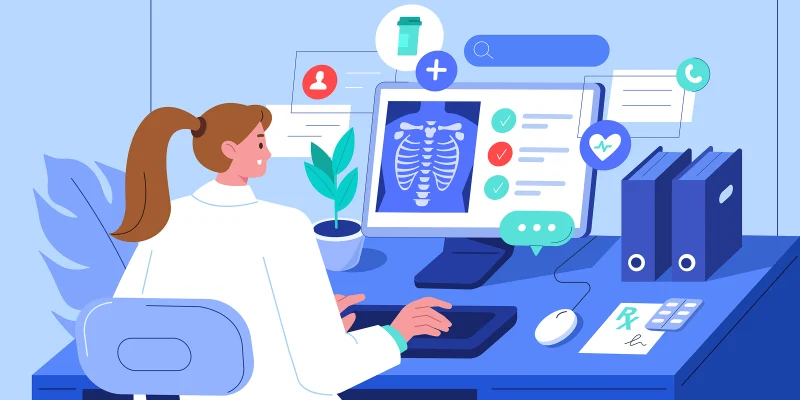Non-nutritive sweeteners have been a topic of interest in health as they relate to diabetes and obesity. My interest in these started before my diabetes fellowship, and my first ADA Scientific session attendance included a session dedicated to these substances. The studies highlighted in 2013 showed some weight gain and increased chances of developing diabetes, citing the San Antonio Heart study by Fowler et al. and another by deKoenig et al.
A position paper by Gardener et al. found insufficient evidence to determine whether non-nutritive sweeteners could replace sugar. Additional research sought to help find some answers to this common question asked of clinicians providing care to people with diabetes. In 2022, new sessions touched on this subject at the 82nd ADA Scientific Sessions.
One of the first sessions, a mini-symposium titled "Top 5 Nutrition Controversies," discussed artificial sweeteners as one of the five controversies. Isolating individual artificial sweeteners for research studies proved difficult as many of our food products include more than one artificial sweetener, so targeting one as more beneficial or harmful than another is difficult. This was the case made in 2013 as well as now. Maureen Chomko’s example during this session showed a hot fudge sundae with food labels for ice cream and fudge as well as five different artificial sweeteners in the labels. A systemic review and meta-analysis by Azad et al., demonstrated that evidence from randomized controlled trials does not show weight management benefits but does suggest that there could be increased in BMI and cardiometabolic risk. The speaker (Chomko)acknowledged confounding factors could be baseline body composition and diet quality as obese individuals may be more likely to consume products including artificial sweeteners.
There was a second mini-symposium titled, "Not So Sweet? Low Calorie Sweeteners, Obesity, and Metabolic Health." The first session in this symposium, "Low Calorie Sweeteners What We Know and What We Don’t," Dr. Michelle Pang started by discussing that low-calorie sweetener consumption has increased as sugar intake has increased. Each sweetener has a very different chemical composition and, therefore, is absorbed and metabolized differently in the body. Saccharin and acesulfame potassium are absorbed into the circulation and excreted in the urine. Aspartame is broken down in the small intestine, and those components are absorbed and metabolized. These three sweeteners are rapidly absorbed, do not affect the colon's microbiome, are rapidly metabolized, and do not accumulate in the body. Sucralose is excreted in feces without being broken down and with minimal absorption. Steviol glycoside (stevia) — a derivative from the stevia plant — interacts with the gut's microbiome, is absorbed and metabolized in the liver, and is excreted by the kidneys. The speaker also acknowledged that different taste receptors in the body will bind to corresponding artificial sweeteners than sugar or will elicit a different response that is weaker with respect to a reward pathway. What is not known is if there are responders and non-responders to effects on the microbiome, and reward pathways are not clear in the context of mixed meals.
The second speaker, Dr. Robert Mattes, in the second mini-symposium, "Low-Calorie Sweeteners’ Impact on Blood Glucose, Hunger, and Weight," reiterated that each low-calorie sweetener is different, so they should be treated differently. There was more focus on the fact that these sweeteners are hundreds of times sweeter than sugar. Studies cited discussed that low-calorie sweeteners do not affect glucose and insulin levels, have no effect on hunger, and total daily energy intake is less with low-calorie sweetener consumption. This point is of particular interest, since there is a belief that consumption of low-calorie sweeteners leads to people eating more and promoting weight gain, but this may be linked, instead, to the desire to eat, which is a cognitive and sensory-driven behavior. Dr. Mattes did share results of his study looking at body weight over time, and his results showed that, over time, body weight increased with aspartame, saccharin, and rebaudioside A (stevia), similar to the consumption of sucrose. However, there was no change in calorie intake. In this same study, sucralose consumption demonstrated weight loss. The conclusions were that low-calorie sweeteners do not cause disordered glycemia or increase appetite but lead to lower BMI and may have different physiologic effects.
So, here is a common question: what does the clinician advise the patient concerning nonnutritive sweeteners, artificial sweeteners, or low-calorie sweeteners? The FDA recognizes them as safe. The ADA Standards of Care state that nonnutritive sweeteners can be a substitute for sugar in moderation to help control glucose and reduce calories as long as there is no increased consumption of other calorie sources. Conclusions from these sessions are that the data are not conclusive enough to recommend one sweetener over another. We know more about low-calorie sweeteners than in 2013, but the message remains the same regarding moderation in their consumption. The other theme with low-calorie sweeteners, which remains a constant throughout diabetes care, is that we should tailor our recommendations to the individual patient.
Dr. Healy has no conflicts of interest to report.
Image by Peter Hermes Furian / Shutterstock







